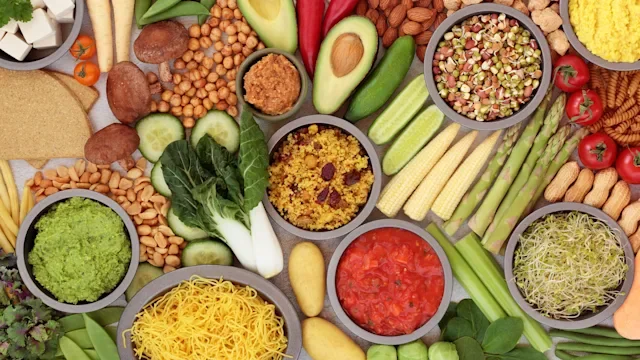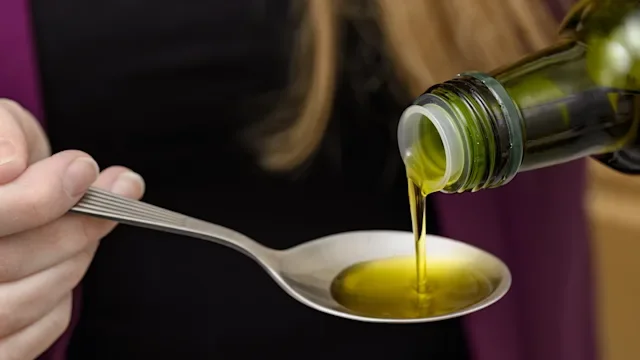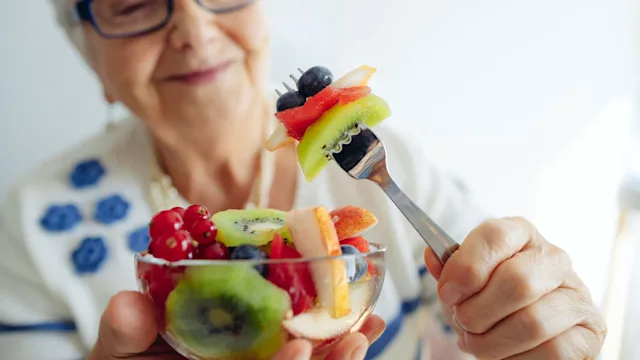Key takeaways:
When you’re making a school lunch, try to include whole grains, vegetables and/or fruits, and a source of protein.
Convenient, easy-to-pack school lunches for kids can include sandwiches, wraps, salads, and snack foods served in multicompartment containers. Dinner leftovers can also work well.
It’s easier to pack school lunches if you plan in advance and have all of the equipment you need in one place.
A well-balanced lunch meal provides kids with the energy and nutrients they need for their physical and mental health, and supports their classroom learning.
Many children in the U.S. eat school-prepared meals. But many bring lunches from home. If you are a parent trying to prepare tasty, healthy school lunches that your child will love, these ideas might help.
What are some healthy school lunch ideas?
According to the U.S. Department of Agriculture (USDA), students enrolled in school lunch programs receive five meal components on their trays to make up a balanced meal. You can follow a similar pattern when you prepare lunches at home. Consider including foods from these five categories:
Vegetables, which have fiber that’s crucial for a healthy digestive tract. Vegetables also provide essential nutrients like potassium, vitamin C, and folate.
Fruits contain fiber, too. And their antioxidants protect the body from damage that can lead to disease or illness. Eating fruit is one way to help keep your kid’s immune system strong, and reduce how often they get sick.
Protein-rich foods, which support muscle and bone health for kids’ growth and development. Protein can come from either animal or plant sources. Examples of animal proteins are chicken, turkey, eggs, and fish. Plant-based options include tofu, beans, nuts, and lentils.
Low- or full-fat dairy, which has calcium, vitamin D, potassium, and vitamin A. Dairy provides protein, and the fat in dairy products can benefit kids’ brain development. This is why choosing either low- or full-fat dairy is best — whether it’s milk, cheese, or unsweetened yogurt.
Whole grains, which contain healthy carbohydrates that give kids energy to play, think, and learn. They also provide fiber, and other nutrients like magnesium and zinc. Whole-wheat bread, brown-rice crackers, and brown rice are a few examples of whole-grains foods.
Below are several healthy school lunch ideas that provide a variety of nutrients for students.
Sandwiches and wraps
Examples of sandwiches or wraps to put in school lunches can include those made with:
Fresh sliced deli meat, like chicken or turkey
Cheese, like cheddar, halloumi, or mozzarella
Tuna salad with sliced celery
Egg salad with fresh herbs
Peanut butter and fruits (or seed butter if nuts aren’t allowed at school)
Hummus or black bean spread with raw or roasted veggies
Baked tofu
Channa masala, veggies, and a yogurt spread
Grilled paneer (Indian-style ricotta) with bell peppers and onions
Falafel
Cream cheese and thinly sliced cucumber
Canned salmon mixed with a sauce like mayonnaise
And remember, sliced sandwich bread isn’t your only option. Try:
Slicing wraps or burritos to make rolls or “pinwheel” sandwiches
Stuffing ingredients into a pita
Wrapping ingredients into flatbread or lavash bread
Using whole-grain pancakes as “bread” to fill with nut butter and fruit
Swapping out plain bread for a whole-grain bagel or English muffin
Bento boxes
A bento box is a lunch container with dividers. They’re convenient for fun children’s lunches. And they make it easy to serve up small portions of a variety of foods (think: homemade Lunchables).
Which snacks will keep you full? If you’ve heard that all snacking is bad for you, think again. These snacks containing protein and fiber will fill you up — and fuel you up.
Building healthy eating habits at home: Modeling healthy and balanced eating, having regular family meals, and not forcing your child to eat are a few ways to start.
Are granola bars good for you? Not always. The best granola bars to choose are those without added sweeteners, refined oils, and unrecognizable ingredients listed on the packaging.
Examples of foods to add to bento box compartments are:
Whole-grain crackers or pita chips
Dumplings such as gyoza or pierogies, heated from frozen
Soba noodles
Cheese slices
Cubed meat, chicken, or tofu
Roasted chickpeas
Crunchy banana or plantain chips
Edamame tossed with salt
Portable fruits, like mixed berries, or orange slices
Applesauce
Vegetables such as bell pepper slices, snap peas, or cucumber rounds
Dips like hummus, baba ganoush, or tzatziki
Sliced avocado (or guacamole)
Peanut butter and apple slice “sandwiches”
English muffin pizzas
Granola
Store-bought veggie sushi made with avocado, carrot, or cucumber
Trail mix
Pasta or orzo
Falafel
Sliced pickles
Dry cereal (low sugar)
Veggie chips
Whole-grain pretzels
Dried seaweed strips
Mini muffins
Note: Small or hard foods such as grapes, baby carrots, and cherry tomatoes are a choking hazard for young children. Avoid packing them, or slice as needed based on your child’s age.
Leftovers for lunch
Dinner leftovers can work well in a lunchbox. Ideas for dinner meals that can work well as lunch include:
Pasta bakes
Macaroni and cheese
Shredded or grilled chicken or tofu
Enchiladas
Lasagna
Turkey burgers
Veggie burgers
Quesadillas
Chili
Casseroles
Pizza
Empanadas
Quiche or frittata
Fried rice
Burrito bowls
Curry
Soups or stews
Salads
Salads don’t always need to be greens-based. Here are some ideas for kid-friendly salads:
Deconstructed taco salad
Pasta salad
Quinoa, bulgur, or farro salad
Caesar salad
Chef’s salad
Fun and healthy extras
There’s nothing wrong with including a sweet item in your child’s lunch. Doing so may actually even increase their excitement about the meal, and make them more likely to consume the different foods you provide.
Here are some ideas:
Dark chocolate squares or chips
Dried fruit like mango, cranberries, and dates
Honey-roasted nuts
Yogurt-covered nuts or raisins
Yogurt-covered pretzels
Mini peanut butter or sunbutter cups
Date balls
Chocolate chip oat bites (either store-bought or homemade)
How do you make homemade lunches for picky eaters?
Picky eating is common, especially in younger kids. About half of toddlers are picky eaters. Most kids become less picky with time, but some continue to have limited food preferences for some time.
One way to address lunchbox pickiness is to include your kids in the lunch-making process. Shop for groceries and assemble lunches together. Kids are more likely to eat foods that they helped choose or prepare.
Here are some other tips to help make lunchtime easier for picky eaters:
Include familiar foods that your child enjoys to eat at home. The lunchbox isn’t the place to introduce unknown ingredients.
Serve what they like. It’s OK if you send the same foods day after day if that’s what they enjoy most. You can always introduce new foods when you’re at home together.
Try not to use pressure or force. Don’t use bribes to make them eat or rewards for bringing home an empty lunchbox.
Add a fun touch. Cut bread into shapes using cookie cutters or add edible “googly eyes” to fruit. You can also include a note with a funny joke or a supportive message.
Tips for packing healthy school lunches
It’s easier to pack school lunches when you plan ahead and get organized. Packing healthy school lunches is easier if you follow these tips:
Have all the items you need on hand. This might include an insulated lunch bag or lunchbox, leak-proof containers, portable cutlery, and ice packs.
Store lunch containers and lids in a designated cupboard or bin. This makes them easy to find when you need them.
Wash out the lunch bag right after school. Then it’s ready for you to grab whenever you make the next day’s lunch.
How to keep lunches safe
Ensure your lunches are free from harmful bacteria with these food safety rules:
Keep foods cold using ice packs and insulated lunch bags.
Keep foods hot with an insulated container (like a thermos). A tip for use: Fill the container with boiling water. Then pour the water out before adding food. This will keep the food in the thermos hot for longer.
Toss uneaten perishable foods at the end of the day. Foods that have been at room temperature for more than 2 hours cannot be put back in the fridge.
Frequently asked questions
Lunchables are prepackaged meal kits that you can buy in the grocery store. They aren’t very good for you. That’s because they contain foods that are high in sodium. They also contain highly processed foods, including processed meats. And Lunchables don’t provide enough whole grains, fruits, or vegetables. It’s better to make your own Lunchable-style meal. This way you can choose more nutrient-rich foods that will fuel your child with energy.
The USDA sets nutrition standards to help ensure that school lunches provide enough nutrients from a variety of food groups. Research suggests that eating school lunches can lead to a more nutritious and balanced overall diet, especially for children from low-income households. Still, how healthy a school lunch is may depend on your own standard of what’s “healthy enough.” Of course, it will also depend on which components of the lunch your child chooses to eat.
Skipping lunch isn’t a good idea as it can prevent kids from getting the nutrients they need to be able to think and learn. Even if kids plan to eat something after school, they should still eat a meal during the school day.
Lunchables are prepackaged meal kits that you can buy in the grocery store. They aren’t very good for you. That’s because they contain foods that are high in sodium. They also contain highly processed foods, including processed meats. And Lunchables don’t provide enough whole grains, fruits, or vegetables. It’s better to make your own Lunchable-style meal. This way you can choose more nutrient-rich foods that will fuel your child with energy.
The USDA sets nutrition standards to help ensure that school lunches provide enough nutrients from a variety of food groups. Research suggests that eating school lunches can lead to a more nutritious and balanced overall diet, especially for children from low-income households. Still, how healthy a school lunch is may depend on your own standard of what’s “healthy enough.” Of course, it will also depend on which components of the lunch your child chooses to eat.
Skipping lunch isn’t a good idea as it can prevent kids from getting the nutrients they need to be able to think and learn. Even if kids plan to eat something after school, they should still eat a meal during the school day.
The bottom line
Lunchtime is a crucial opportunity for kids to get the nutrients they need to thrive in school. There are lots of ways to put together nutritious school lunches. Try to include foods from a variety of food groups — like proteins, whole grains, fruits, veggies, and dairy foods. And have your child take part in the shopping and/or meal prep. This makes it more likely that they will eat what you pack.

Why trust our experts?



References
Au, L. E., et al. (2019). Eating school meals daily is associated with healthier dietary intakes: The healthy communities study. Journal of the Academy of Nutrition and Dietetics.
Centers for Disease Control and Prevention. (2024). Choking hazards.
DeJesus, J. M., et al. (2019). Children eat more food when they prepare it themselves. Appetite.
Food Research and Action Center. (2021). School meals are essential for student learning and health.
Garcia-Iborra, M., et al. (2023). Optimal protein intake in healthy children and adolescents: Evaluating current evidence. Nutrients.
Hojsak, I., et al. (2022). Benefits of dietary fibre for children in health and disease. Archives of Disease in Adolescence.
López-Alt, J. K. (2024). A school lunch solution: The bento box. The New York Times.
Nemours Children’s Health. (2022). Fats.
U.S. Department of Agriculture, Food and Nutrition Service. (n.d.). National school lunch program.
U.S. Department of Agriculture, Food Safety and Inspection Service. (2016). Keep food safe! Food safety basics.
U.S. Department of Agriculture, Food and Nutrition Service. (2022). National school lunch program meal pattern chart.














